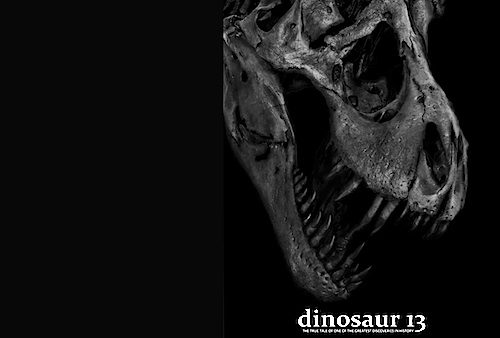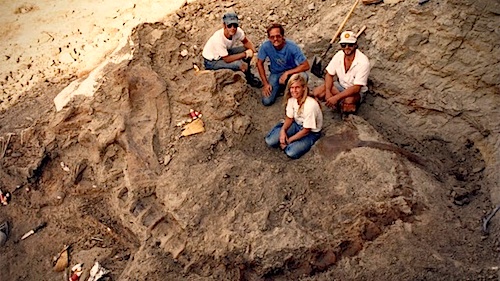 By Joe Bendel. Practice paleontology, go directly to jail. That is the Federal government’s idea of justice. Frankly, it should hardly surprise us anymore, but viewers will still be shocked and appalled at a multi-agency smack-down that targeted a beleaguered independent fossil hunter. It all started with a T-Rex named Sue. Todd Douglas Miller chronicles the thrill of discover and the agony of government persecution in Dinosaur 13, which screens during the 2014 Sundance Film Festival.
By Joe Bendel. Practice paleontology, go directly to jail. That is the Federal government’s idea of justice. Frankly, it should hardly surprise us anymore, but viewers will still be shocked and appalled at a multi-agency smack-down that targeted a beleaguered independent fossil hunter. It all started with a T-Rex named Sue. Todd Douglas Miller chronicles the thrill of discover and the agony of government persecution in Dinosaur 13, which screens during the 2014 Sundance Film Festival.
Until 1990, the few collected tyrannosaur skeletons were only 40% intact, at best. Sue was about 80% intact, including the s-word, “skull.” She was named in honor of the woman who found her, Susan Hendrickson, a friend volunteering on a private dig organized by Peter and Neal Larson, paleontologist brothers who operated a for-profit fossil collection agency. They painstakingly excavated Sue and successfully began the early preservation process. Their idea was to keep Sue the T-Rex in economically depressed Hill City, South Dakota, using her to anchor their planned natural history museum. Then one fateful day, the FBI swept in with search warrant and the state National Guard confiscated the fragile fossil.
What follows is an absolute horror story of abuse of power, malicious prosecution, and state sponsored plunder. Unfortunately, the Larsons had been prospecting on the land of the thoroughly shady Maurice Williams, with his full permission. They had duly purchased Sue from Williams, but as a member of the local tribe, Williams’ land was held in trust by the Federal government, which led to rather murky circumstances when Williams decided to reclaim Sue. Naturally, the Federal government fell in line behind Williams, with the IRS quickly ganging up on the Larsons. As the legal battle dragged out, the Feds and the presiding judge grew increasingly vindictive.
Miller’s film raises a number of issues beyond the obvious injustice of an innocent paleontologist sentenced to the same maximum security Federal pen incarcerating Timothy McVeigh. Anyone involved in natural resource industries in the west understands how the vast extent of Federal holdings creates bureaucratic nightmare. However, one of the most fascinating aspects of Dino 13 (deserving more time) is the way university academics joined forces with the government in their contempt for scrappy private sector fossil hunters like the Larsons.

By documentary standards, Dino 13 boasts a rather classy package, incorporating cinematographer Thomas Petersen’s striking Black Hills vistas and composer Matt Morton’s distinctive score. Yet, the film has a muckraking heart. Miller completely convinces viewers a crime was committed in South Dakota and the Larsons were the victims.
Indeed, it is hard to mistake the nature of the persecution that was started by an interim Bush I U.S. Attorney and intensified under his Clinton-appointed successor, given the conspicuous absence of government players willing to sit for an interview. Only one former IRS agent has the guts to try to defend their actions, failing miserably. As a result, you do not have to be a diehard Objectivist to view the Sue T-Rex battle as an attack on free enterprise, driven by greed and vanity. Thoughtfully constructed and dramatically potent, Dinosaur 13 is recommended for all doc watchers when it screens again today (1/18) in Salt Lake, as well as this Tuesday (1/21) and Friday (1/24) in Park City during the 2014 Sundance Film Festival.
LFM GRADE: A-
Posted on January 18th, 2014 at 5:55pm.